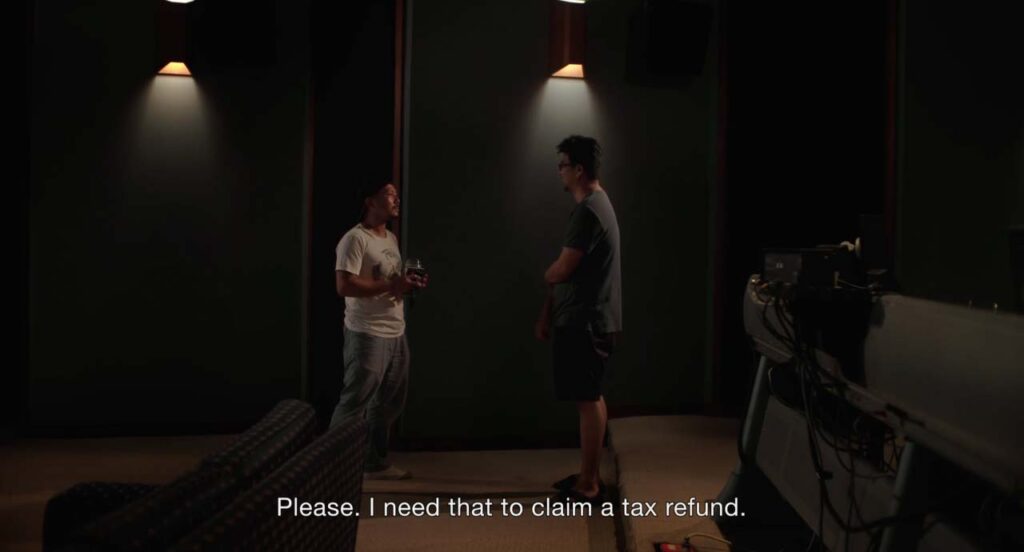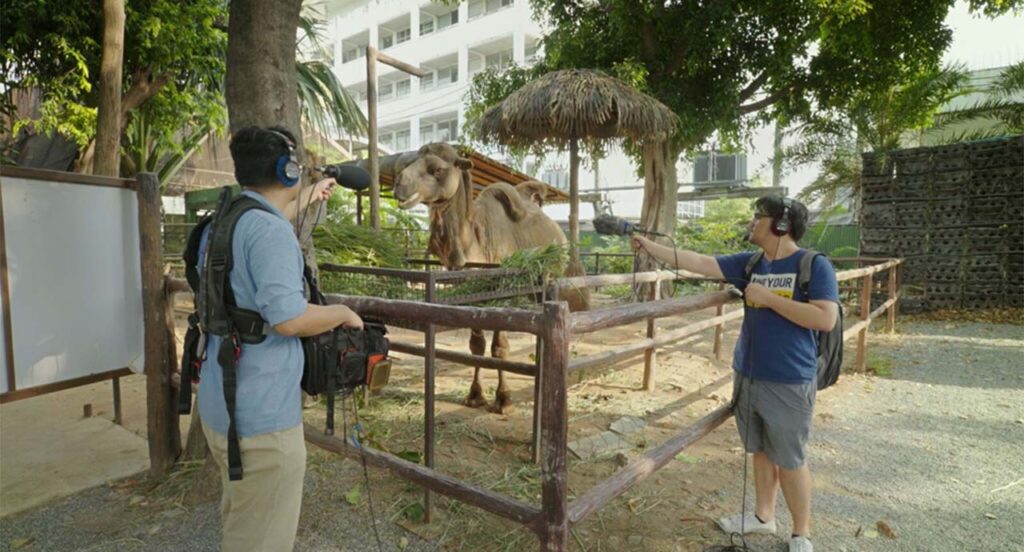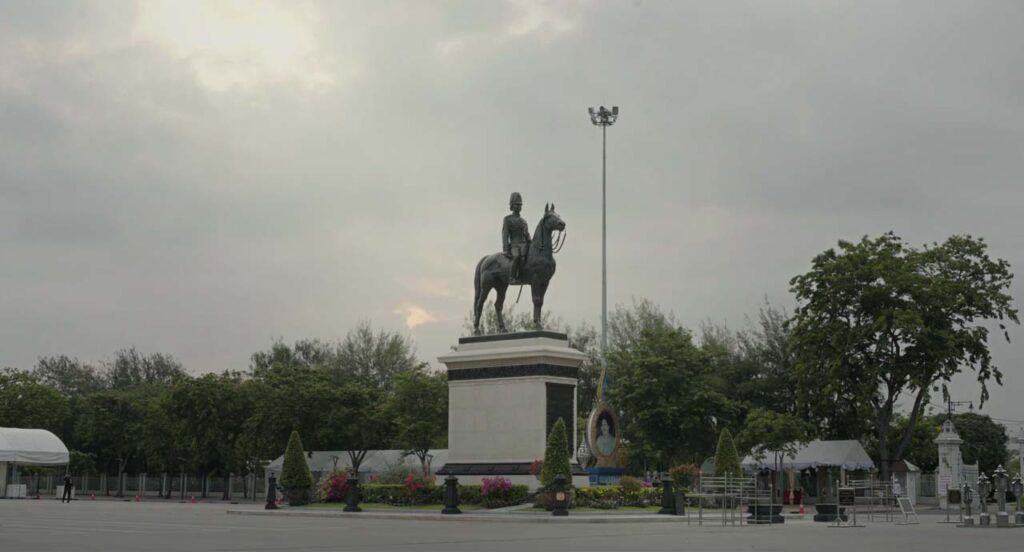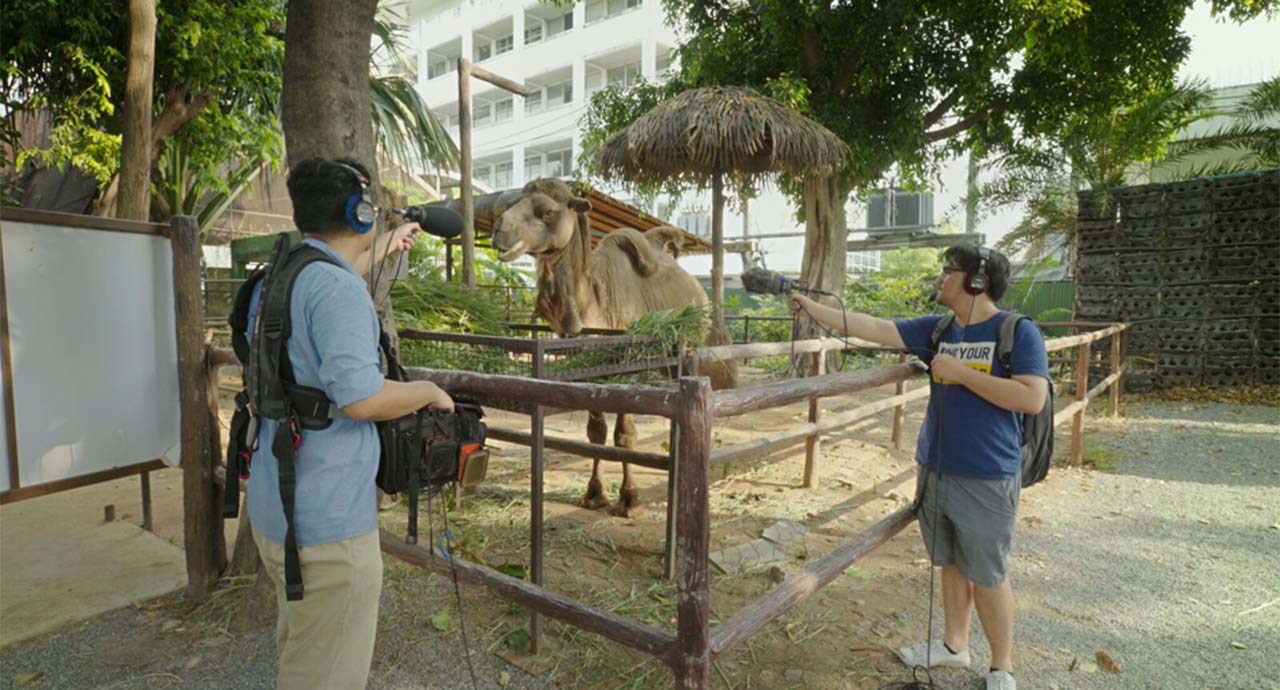Resisting Exploitation in Death of the Sound Man
(This analysis of the short film will contain spoilers)
“Do we have to re-record those sounds every time?”
“It’s not that necessary. But it’s better to do. If you keep using the same sound, the audience could recognize.”
In Thai director Sorayos Prapapan’s latest short film, Death of the Sound Man, the audience is invited into the experiences of sound recordists. Fundamentally, the film explores the dying appreciation and acknowledgment of the sound man. Yet, on a deeper and more symbolic level, the film tackles a more challenging issue about the difficulty of embracing honest living against an increasingly economical world that condones exploitation in favor of personal advantages.
There’s this moment in the film when the sound men drink water, only to find that the government has added too much chlorine into the water supply. While this seems like a criticism towards the Thai government, this interpretation is too superficial an understanding of what Prapapan is trying to get across. The point is not the imperfections of the government, but the fundamental fact that exploitation exists in this world, sometimes at a governmental level. Take the preceding moment of the sound men having to ask for overdue payment from a client. Literally, it is about the sound man trying to survive in a world that offers no respect or appreciation towards them. Symbolically, it is the exploitation of businesses on individuals by trying to make excuses while saving money for themselves. Exploitation may work twofold here (government-populace and business-individuals), but it is clear that Prapapan is begging us to consider the prevalence of exploitation today.

While some may argue that this criticism seems Thai-specific, we should reflect upon another layer of exploitation that the film considers: Man exploiting Nature. Imagine a perfectly serene scene overlooking an undisturbed lake circumferenced by lush hills. Then, a gunshot. And the uproar of animals awoken by the disturbance. That’s a deeply disturbing scene near the denouement of the film. The very vulgar abuse that Man hurls towards Nature signifies another layer of disrespect and exploitation that the film alludes to.

It is significant to use the sound man as a symbol of the victim of exploitation. It is clear that they are aware of the exploitation surrounding them. How then do they resist it? Through the recording of sound, the sound man is symbolically recording the moments that would otherwise be unacknowledged or disrespected by others in society, therefore allowing these little moments to live on in film. In being observers to their process of recording, the audience is given the privileged opportunity of seeing how we can preserve the moments otherwise exploited, and therefore becoming part of the resistance against exploitation. Instead of being accomplice to this exploitation by simply reusing their sounds (which they can), the honesty of the sound man pays tribute to a way of living that juxtaposes the exploitation so prevalent in society. This is honest living. The singular ‘the Sound Man’ seems ironic when there are in fact, two sound men the film follows. However, the use of this phrase implies that the film is not about the two sound men but a more universal Sound Man, and by extension, the universal victims of exploitation and at the same time, the individuals who attempt to resist exploitation through honesty.
It is ingenious to approach this subject through the use of the short film medium. There are many scenes that run up to twenty seconds, demanding the audience’s attention to scenes that would otherwise be cut or shortened in mainstream films. In forcing the audience to sit through these moments, the film is imploring us to consider and to respect these moments for what they are. In contrast to the proliferation of handheld cinematography that creates an impression of a human presence, this film simply uses stable camerawork. Not only does this focus only on the moments captured in the film, but also invites the audience to find the patience of the Sound Man to appreciate these moments. The film therefore becomes more than a documentation of the task of the sound man, but a transformative experience for the audience.

However, even as the film offers the possibility of honest living as the alternative to exploitation, there seems to be a defeatist attitude. The title itself declares that the sound man has already died – honesty is extinct. Take the stable camerawork in the gunshot scene as an example. Even as the audience recognizes the exploitation, there is nothing that the characters, film or audience can do. We are only able to acknowledge that the moment of abuse has happened, unable to resist, only to react. Yet, this could be Prapapan’s point. By showing how exploitation happens and how nothing is powerful enough to stop businesses, the government, or Man, he is imploring his audience to be the change necessary to resist. The Sound Man is the model he pays tribute to, encouraging us to emulate that honest attitude.
Death of the Sound Man is more than just a film about sound recordists. It is in recognizing the layers beneath the literal plot that we allow the importance of Prapapan’s message to be appreciated by the audience in a way that the sound man would never be appreciated for their invisible work. Prapapan records these moments for what they are and never does more than he should (such as showing explicit resistance against exploitation). Through his silence, he invites the audience to carry out the resistance necessary. Too often, filmmakers are afraid of embracing this silence or a quiet way of recording the moments, preferring the loudness of shaky camerawork or a heart-thumping plot. It is the subtlety and silence of Death of the Sound Man that makes the message so clear and encouraging. And perhaps, that’s enough.


